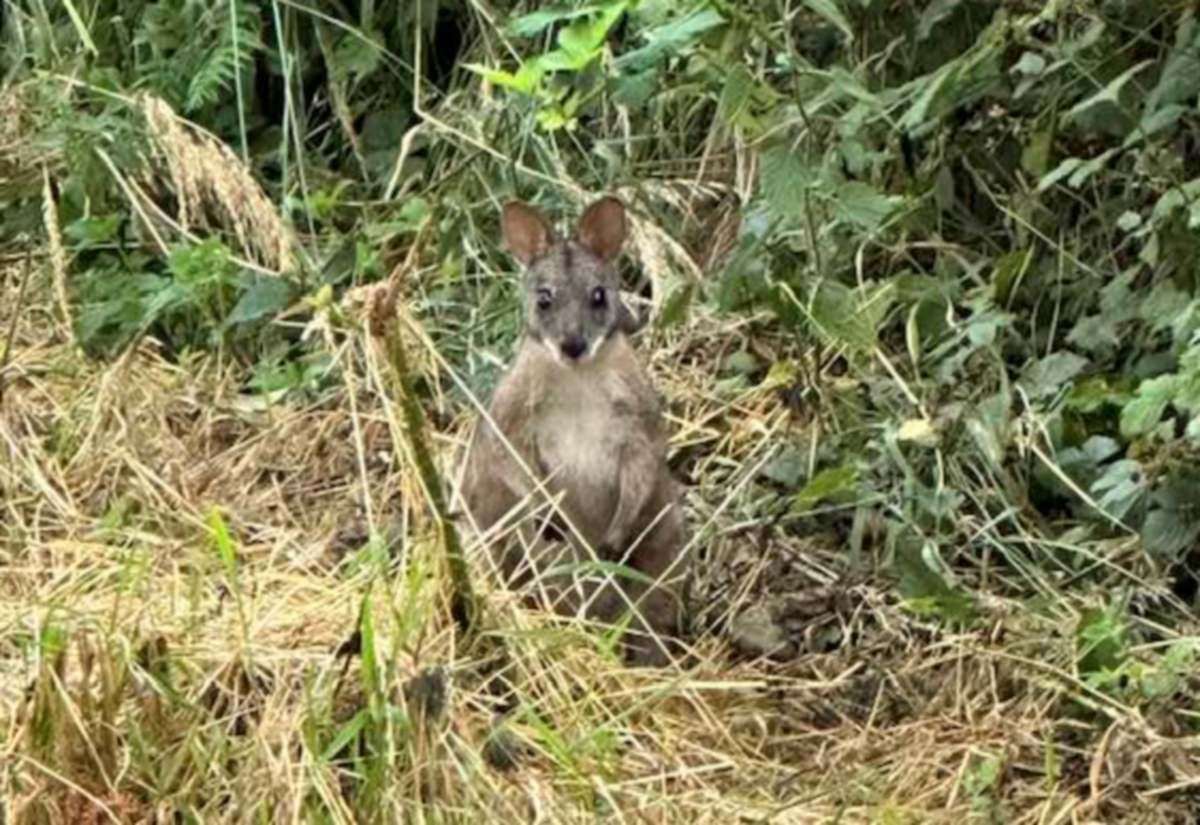Last summer, a request from a local journalist for help confirming the identity of an animal photographed on the outskirts of the village of Calverton sparked a flurry of interest.
The animal in question was a wallaby and my initial response was one of surprise.
Assuming it to be an escaped individual, my early comments to the media were guided more by knowledge that introduced species often have unforeseen negative impacts on native species rather than any information suggesting that wallabies were likely to pose a threat to native species.
Wallaby in Calverton, 2024. Photo: Ben Thompson.
However, the mere suggestion that if established in numbers, wallabies could pose a threat triggered a spirited defence of these antipodean arrivals by a columnist in a national Sunday newspaper.
The columnist postulated that the conservation sector was prejudiced against non-natives and that we should instead worry about impacts from housing development, pesticides and habitat fragmentation.
While these are worthy of concern, to idly dismiss the impact of unwelcome incomers is to ignore the fact that invasive non-native species are among the top five reasons for the global biodiversity decline.
The establishment of a non-native species can precipitate a tipping point for species already under pressure and while there is no suggestion that wallabies are at a problematic level here in Nottinghamshire, the flurry of further sightings after the original report suggests that we should learn lessons from our colleagues at the Manx Wildlife Trust who are having to grapple with difficult questions about what to do now it has become clear that there are far more wallabies on the Isle of Man that was previously assumed.
Wallaby spotted at Oakmere Golf Club in Oxton, in 2024.
It would seem that there has been a culture of complacency since a feral population of wallabies became established after escapes from the Island’s zoo.
They were viewed as a quirky addition to the landscape and even a welcome boost for tourism but recent surveys using infrared drones have revealed that a population assumed to be in the low hundreds is likely to now be over 1000.
Despite their relatively large size and conspicuous ‘hopping’ means of travel, they have been hiding in plain sight, particularly among the wild wetlands of the Ballaugh Curraghs, which is an internationally designated wetland reserve.
While wallaby numbers have flourished, bird species such as the threatened hen harrier — a ground nesting species — have declined in the area.
This has raised questions as to whether the wallabies can still be considered a benign addition and whether efforts to control their numbers should now be considered — especially in light of additional concerns about the wallabies’ health due to inbreeding.
Nottinghamshire Wildlife Trust
While I’m in no way suggesting that wallabies in Nottinghamshire will ever reach such numbers, the experience of our Manx colleagues illustrates the risk of complacency.
Given that hen harriers haven’t bred in Nottinghamshire since Queen Victoria was on the throne, wallabies clearly pose them no risk, but the wallabies sighted around Calverton and Oxton are no more than a hop, skip and jump from Sherwood Forest where we do have ground nesting nightjars.
Should numbers of non-native wallabies ever increase to such a level that they were proven to be affecting nightjars’ numbers, controls would at least need to be considered.
For now, we can rest easy that this theoretical scenario is decades away and, in all likelihood, will never transpire.
No one involved in nature conservation want to take efforts to cull one species to benefit another.
But where science provides conclusive evidence of impact and a route map to successful control — as it has in the case of mink and water voles — we may have no choice but to act.
18 months into our efforts to reduce mink numbers in Notts to give water voles a fighting chance, there are signs that other species including great crested grebes, moorhens and ducks are already benefitting from the absence of voracious mink, boding well for the long-term return of threatened water voles.

